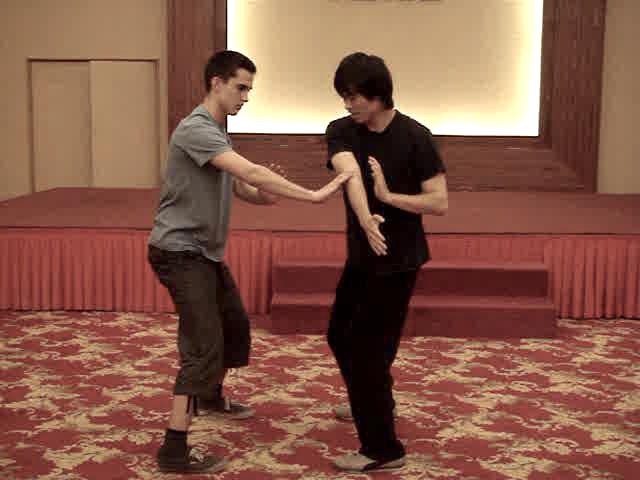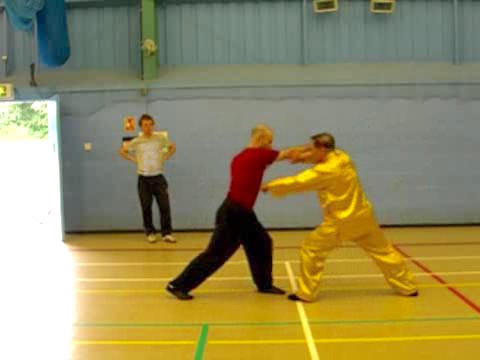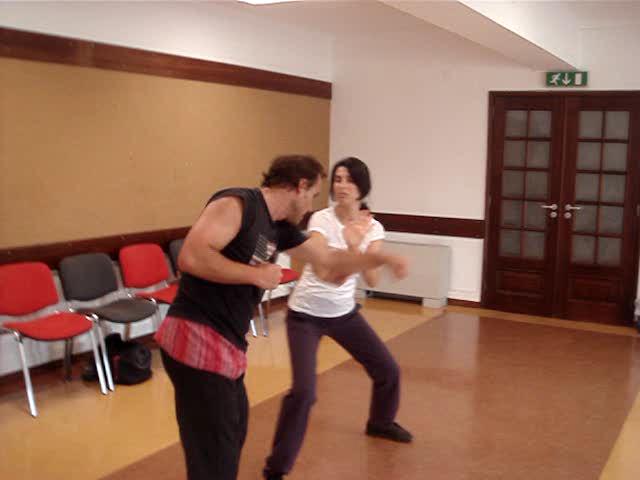DOES PRACTICING DIFFERENT KUNGFU STYLES OR MANY KUNGFU SETS CONTRIBUTE TO OR DISTRACT FROM KUNGFU PROGRESS?

|

|
Does practicing different kungfu styles or many kungfu sets contribute to or distract from kungfu progress?
Sifu Roland Mastel and Sifu Andrew Barnett asked this question independently when they met Grandmaster Wong during the regional courses in Bern and Zurich in September 2010.
For many people, practicing two or more different styles (or many kungfu sets) will be detrimental to their kungfu progress. This is because the different styles conflict with one another. For example, Wing Choon techniques are generally short-ranged, whereas Praying Mantis techniques are long-ranged. Someone used to short-ranged techniques would be at a disadvantage when required to use long-ranged techniques, and vice versa. Taijiquan techniques are generally soft and circular, whereas Tantui techniques are generally hard and straight. Someone trained in soft and circular would be at a disadvantage when this training is used for hard and straight techniques, and vice versa.
However, for Shaolin Wahnam students these different styles (or many kungfu sets) will complement one another and enhance not only their kungfu attainment but also the daily life. I am aware that some people may not be happy with what I shall explain, and may accuse us for being boastful or conceited. As I have mentioned a few times, that is their business, but we are not afraid to speak the truth for the benefit of our students as well as other people who share our philosophy.
Why is it that practicing different styles will be detrimental to many people but contributing to us? It is because of the different nature and scope of training between other people and us. Other people train only the external form of the different styles, and seldom go deep into kungfu basics or the philosophy of these different styles. For example, they train the form of Wing Choon sets, and then the form of Tantui sequences. From this approach, as Wing Choon form is very different from Tantui form, training the two different styles together will be detrimental.
Our approach is different. We do not start with Wing Choon sets or Tantui sequences; we start with kungfu basics like stances, footwork, hand forms, exploding force, breath control, chi flow and mental focus, which can be applied to any styles. With this foundation, when we learn Wing Choon, Tantui or any other style, we experience different applications of the kungfu basics.
For example, other people learn how to perform a short strike using a short stance in Wing Choon, and then learn how to perform a long strike using a long stance in Tantui. As these two forms are diametrically different, they distract from each other. When they perform Wing Choon, their training in Tantui interferes with their Wing Choon movement. When they perform Tantui, their Wing Choon training interferes with their Tantui movement.
Our approach is different. We do not merely learn a Wing Choon strike or a Tantui strike. We learn how to make a strike using a stance. We do not just limit our short strike to a short stance, we may also use a long stance. Similarly we do not just limit our long strike to a long stance, we may also use a short stance. Hence, when we learn Wing Choon, Tantui or any other style, it provides a structure for us to apply what we have trained. Indeed, the more styles we learn, the more structures we have, which results in us becoming more combat efficient.

|

|
Moreover, we also learn kungfu philosophy in general as well as Wing Choon philosophy and Tantui philosophy in particular. This gives insight and meaning to our application. We know, for example, the advantages and disadvantages between short-range and long-range combat, and shall choose an appropriate strike using an appropriate stance to minimize disadvantages and maximize advantages.
When other people use a short strike in a short stance, they call it Wing Choon Kungfu. When they use a long strike in a long stance, they call it Tantui. But they would not use a short strike in a long stance, or a long strike in a short stance. If they did, their classmates would criticize them, saying that their form was neither Wing Choon nor Tantui. They have become a slave to their form.
We do not face such self-imposed restriction. If someone criticize us saying that our form is neither Wing Choon nor Tantui, we reply by saying that kungfu is alive, and we make an appropriate modification to suit the situation. To us our forms are our tools, they serve our purpose, not we enslave ourselves to them.
This does not mean we would readily disregard our form. We would not, for example, substitute a Wing Choon or a Tantui strike with a Boxing jab, or substitute a short stance or a long stance with bouncing about. We would not do so not because we are afraid of criticism - indeed, if if were advantageous to do so, we would - but because from both philosophy and experience we have found that using Wing Choon, Tantui or any kungfu form enables us to be more combat efficient than jabbing and bouncing about.
